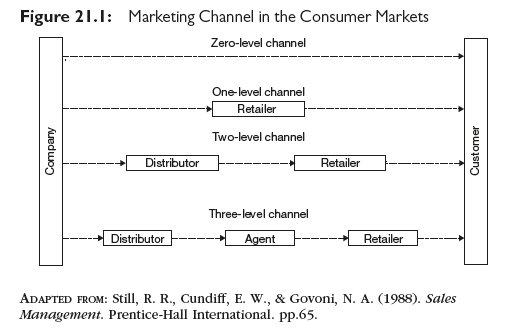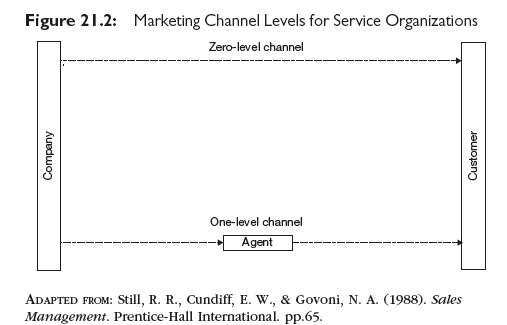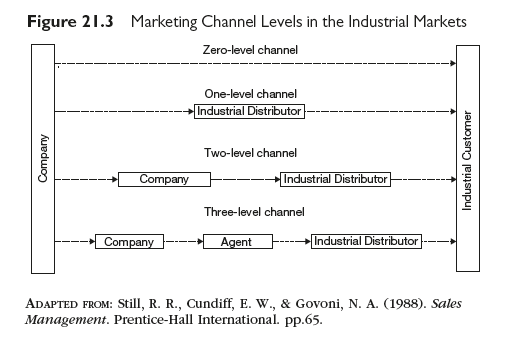Design of the marketing channel is critical for the success of a business. The important factors affecting the designing of a marketing channel are strategic objectives, product portfolio, target market, technological advancements, competition, channel structure, channel intensity, the type of intermediaries required at different levels and the costs involved in selecting a particular channel. Channel structure states the number of levels of channel intermediaries like distributors, wholesalers, and retailers used by an organization to reach its target customer, whereas channel intensity denotes about the number of channel intermediaries required at each level.
It is observed that the use of only one channel is not sufficient in the current technologically advanced period. There is a need to develop different channels to serve different-sized clients. Many companies are adopting multichannel structure that optimises channel coverage, adjustability and control. This also minimises the cost and conflict.
Channel length and channel breadth are also very critical in the designing of a marketing channel. The channel length is the number of channel partners between the company and the customers and channel breadth is the number of outlets with product availability for the customers. Marketing channels can be either short or long. A short channel will have few intermediaries and a long channel will have many intermediaries working to move the products from the company to the customers. The commonly used channel levels are zero level, one level, two levels, and three levels.
1. Marketing Channels in the Consumer Markets
In a zero-level channel, the company sells the products directly to the customers. This can be done through online retailing, direct selling, and so on. Many companies like Kent, Oriflame, Eureka Forbes, Avon, Amway, Tupperware, and Herbalife in India follow zero-level channel structure to reach their customers. Online sale of Dell products is also an example of zero-level channel structure. In a one-level channel, the company sell the products to customers through one channel intermediary. This channel intermediary can be a distributor or a retailer. One-level structure is mostly used by companies selling electronic goods, petroleum products, automobiles. For example, Lenovo directly supplies its products to the authorized dealers, who sell them to the customers. There are two-channel intermediaries between the company and the customer in the two-level channel structure. Usually, these two intermediaries are the distributor and the retailer. The company sells the products to the retailer through its distributor. The retailer then sells the products to the customers. Two- level marketing channel is mostly used by companies selling fast moving consumer goods. Pharmaceutical companies also follow the two-level channel structure. There are three-channel intermediaries between the company and the customer in the three-level marketing channel. Usually, these three intermediaries are the distributor, the agent, and the retailer. In the three-level channel structure, an agent mediates between the distributor and the retailer.
For example, many agents procure orders of medicines from the hospitals and also help in the delivery of these products by mediating between the distributor and the retailer. Figure 21.1 shows the different marketing channel levels in consumer markets.

2. Marketing Channels for Services
Service organizations go for short channels because of intangibility and perishability of products. In most cases, the service organizations follow a zero-level channel as these companies sell the products directly to the customers whereas few service organizations like insurance, travel, real estate do need an intermediary, often an agent, who mediates between the company and the customer and helps to complete the transaction. Figure 21.2 shows the different marketing channel levels for service organizations.
3. Marketing Channels in the Industrial Markets
Companies marketing industrial products usually prefer shorter marketing channels than consumer products companies due to geographical concentrations and relatively few customers. In a zero-level channel, the company sells the products directly to the industrial customers. Most of the companies in industrial selling follow the zero-level channel. In a one-level channel, the company sell the products to customers through the industrial distributors. Most of the companies in the industrial markets follow the one-level channel structure. There are two channel intermediaries between the company and the customer in the two-level channel structure. These two intermediaries are the company’s representative and the industrial distributor. In the three-level channel structure, an agent mediates between the industrial distributor and the company’s representative. For example, many agents procure export orders by mediating between the distributor and the company representative. Figure 21.3 shows the different marketing channel levels in industrial markets.


Source: Richard R. Still, Edward W. Cundliff, Normal A. P Govoni, Sandeep Puri (2017), Sales and Distribution Management: Decisions, Strategies, and Cases, Pearson; Sixth edition.

Magnificent web site. Lots of useful info here. I’m sending it to some friends ans also sharing in delicious. And of course, thanks for your effort!